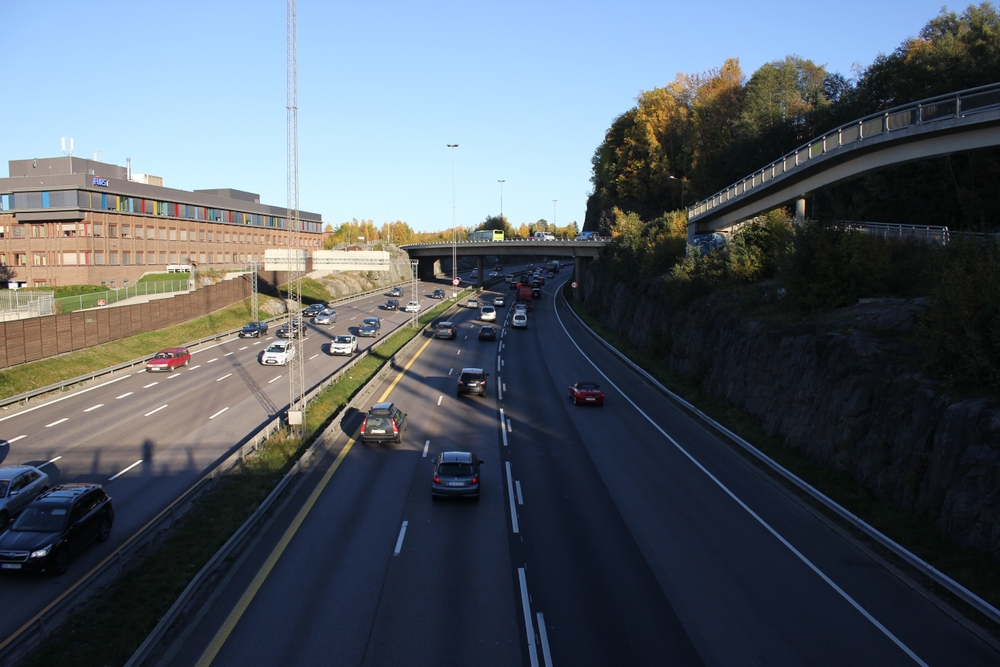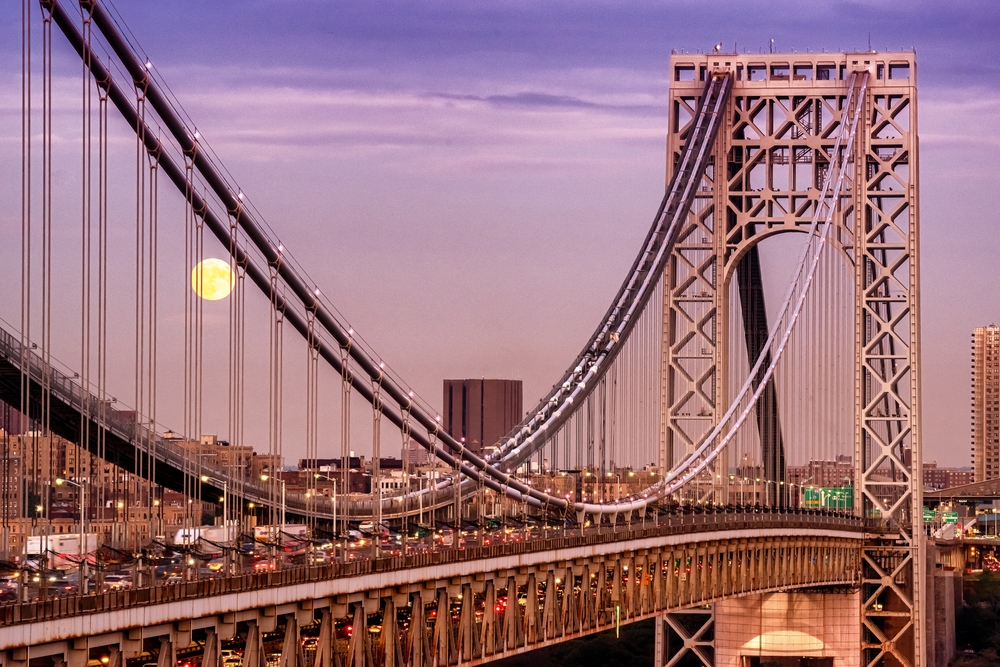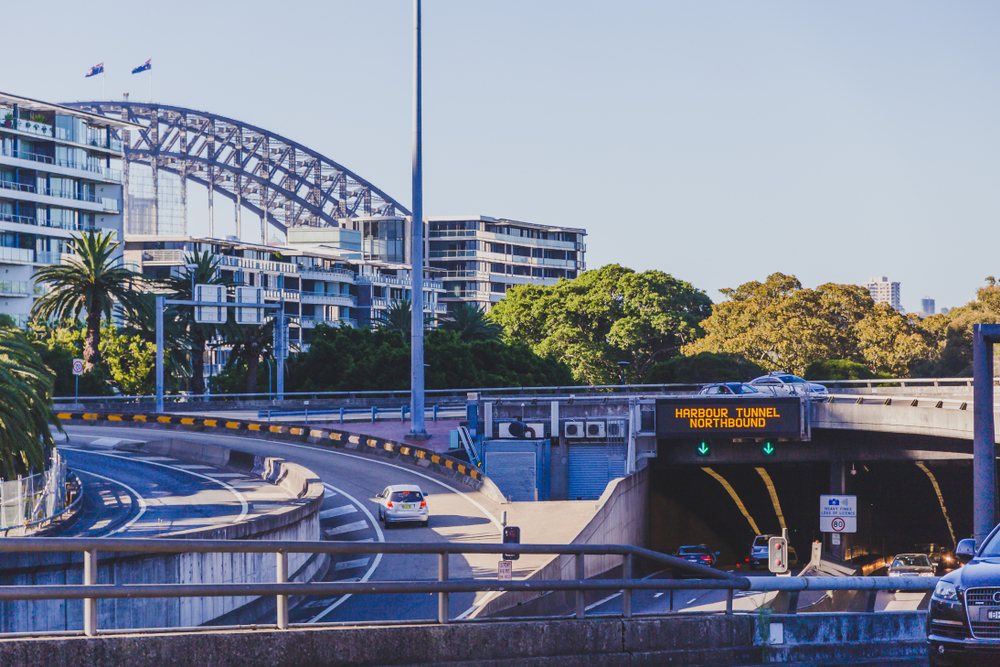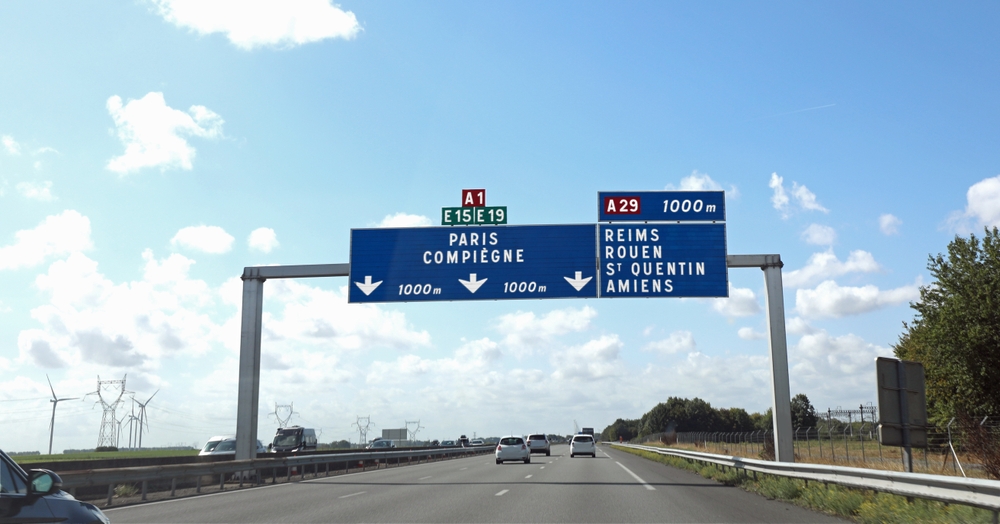Driving through certain regions can come with a hefty price tag due to high road tolls. Whether you’re commuting for work or embarking on a road trip, toll costs can quickly add up, making travel more expensive than anticipated. From bridges and tunnels to entire highways, some areas stand out for their particularly steep fees. Here’s a look at the regions where drivers face the highest road tolls.
Contents
Norway’s E18 and E6 Routes

Norway’s E18 and E6 highways are notorious for their tolls, especially around the capital city, Oslo. Commuters frequently encounter fees ranging from $5 to $10 at each toll point, depending on their vehicle’s emissions and the time of day. Electric cars enjoy some discounts, but traditional gasoline and diesel vehicles face steep costs. These tolls primarily fund the maintenance of Norway’s vast network of tunnels and bridges, critical for a country known for its rugged terrain.
New York City, USA (George Washington Bridge)

The George Washington Bridge, connecting New Jersey and Manhattan, has one of the highest toll rates in the United States. During peak hours, drivers can pay up to $17 for a one-way crossing. This fee supports the upkeep of the bridge and other infrastructure projects across the region. While E-ZPass users receive slight discounts, the toll remains expensive for daily commuters. The bridge is essential for the region’s heavy traffic flow, making it a necessary but costly crossing.
Sydney, Australia (Harbour Bridge and Tunnel)

In Sydney, drivers are charged a premium to cross the iconic Harbour Bridge or use the Harbour Tunnel. The tolls vary based on time, with peak hours seeing charges of over $8 per trip. These funds are crucial for maintaining and improving Sydney’s road infrastructure. With millions of vehicles using these routes annually, the toll helps manage congestion and ensure smooth transit.
London, England (Congestion Charge Zone)

In central London, drivers must pay a daily congestion charge of £15 ($18) if they enter the designated zone during operating hours. The charge aims to reduce traffic and encourage the use of public transportation. Although electric vehicles are exempt, most drivers find the fee unavoidable, adding to the cost of living in the city. The revenue generated supports infrastructure improvements and green initiatives.
Tokyo, Japan (Shuto Expressway)

The Shuto Expressway in Tokyo comes with steep tolls for those using its central routes, often costing drivers around ¥1,300 ($11) per trip. These charges are essential for maintaining the densely trafficked highway system in one of the world’s busiest cities. Regular commuters pay these tolls as a price for convenience, helping to reduce congestion on surface streets. The toll system also supports the expansion of the expressway network to accommodate the city’s growing traffic demands.
California, USA (Golden Gate Bridge)

Crossing San Francisco’s Golden Gate Bridge during peak hours can cost drivers as much as $9.75. This scenic route is as iconic as it is expensive, with tolls supporting the maintenance of the bridge and other Bay Area infrastructure projects. Frequent travelers can save slightly by using the FasTrak system, but the toll remains one of the highest in California. Despite the costs, it remains a heavily trafficked route due to its significance in connecting the region.
Stockholm, Sweden (Congestion Tax)

Stockholm’s congestion tax is designed to regulate traffic flow and reduce emissions within the city. The fee ranges from SEK 11 ($1) to SEK 45 ($4) depending on the time of day, adding up quickly for frequent drivers. This dynamic pricing system ensures that peak traffic hours are more costly, encouraging drivers to consider alternative routes or times. Funds from the tax go toward public transportation and green initiatives. The congestion tax has been instrumental in keeping Stockholm’s traffic manageable.
Paris, France (Autoroute A1)

The Autoroute A1, connecting Paris to the northern regions of France, is one of the country’s priciest toll roads. Drivers pay more than €20 ($22) for a one-way trip, especially during peak travel times. This route is vital for connecting Paris to major cities like Lille, making it heavily trafficked year-round. The toll revenue is reinvested into maintaining and expanding France’s impressive motorway system. Electronic toll passes can make the journey slightly cheaper, but it remains an expensive road for most travelers.
Dubai, UAE (Salik Toll System)

Dubai’s Salik toll system charges AED 4 ($1.09) at multiple points along key highways, making it costly for frequent commuters. The tolls are automatically charged via electronic gates, which are strategically placed at high-traffic areas, including Sheikh Zayed Road. These funds are vital for maintaining Dubai’s expansive road network and ensuring smooth traffic flow in a city known for its luxury cars and modern infrastructure. Drivers without a Salik tag can face additional charges, making it important to stay registered.
Ontario, Canada (Highway 407 ETR)

Ontario’s Highway 407 ETR is a privately operated toll road that charges based on distance traveled, with fees rising significantly during peak hours. Some drivers pay upwards of CAD 30 ($22) for a single trip, depending on their route. The highway offers convenience for those looking to bypass the congestion of other major roads, but at a high price. Regular users often invest in electronic transponders to save on costs. Despite its steep tolls, the 407 remains popular for its time-saving benefits.
Singapore (Electronic Road Pricing System)

Singapore’s Electronic Road Pricing (ERP) system adjusts toll fees according to traffic conditions, with drivers paying more during peak congestion. Fees can reach SGD 6 ($4.40) during the busiest times, making it one of the costlier systems in Asia. The ERP system is designed to control traffic flow in the densely populated city-state, encouraging off-peak travel. The funds are used to support Singapore’s extensive public transport and road networks.
Milan, Italy (Area C)

Milan’s Area C congestion charge applies to vehicles entering the historic city center on weekdays, with a fee of €5 ($5.50). The charge helps to reduce traffic and improve air quality in the city’s narrow, ancient streets. Vehicles that produce lower emissions are offered discounts or exemptions, while older cars pay the full price. Revenue from the tolls supports public transport and eco-friendly initiatives. Milan’s Area C is a model for congestion zones in other European cities.
New Jersey, USA (New Jersey Turnpike)

The New Jersey Turnpike is a major thoroughfare that charges tolls based on the distance traveled, with some drivers paying over $18 for long trips. This fee supports the maintenance and expansion of one of the busiest highways in the United States. The Turnpike is critical for both local commuters and interstate traffic, connecting major cities across the East Coast. E-ZPass users benefit from discounts, though the costs remain high for frequent travelers.
Istanbul, Turkey (Bosporus Bridge and Tunnel)

Crossing between Europe and Asia via Istanbul’s Bosporus Bridge or Tunnel costs around TRY 15 ($1.50) for regular vehicles. These tolls help maintain the critical infrastructure that connects both sides of the city. With millions of vehicles crossing each day, these routes are vital for Istanbul’s economy and transportation system. Revenue from the tolls is also used to expand and modernize Turkey’s highways. The Bosporus crossing is one of the busiest in the region.
Los Angeles, USA (Express Lanes)

Los Angeles drivers can use express lanes on highways like the I-10 and I-110 to avoid congestion, but at a cost. Tolls are dynamic and vary based on traffic levels, with some drivers paying as much as $4 per mile during peak times. The revenue from these lanes helps maintain the region’s extensive highway system and reduce overall congestion. Electronic toll transponders provide discounts, but many drivers still face high costs. Express lanes are a popular, though pricey, solution for LA’s infamous traffic.
This article originally appeared in MyCarMakesNoise.
More from MyCarMakesNoise
20 Groundbreaking Car Innovations That Didn’t Succeed

Some automotive innovations were revolutionary, pushing the boundaries of technology and design. Despite being ahead of their time, they failed to gain traction in the market. Read More.
20 Classic Boomer Cars That Don’t Appeal to Millennials

Classic cars beloved by the Boomer generation often go unnoticed by Millennials. Despite their charm and historical significance, these vehicles are being overlooked by the younger generation. Read More.
20 Iconic Cars from Brands That Are No Longer Around

Some of the greatest cars come from brands that have unfortunately ceased to exist. These vehicles remain iconic, showcasing innovative designs and engineering that left a lasting impact on the automotive world. Read More.














